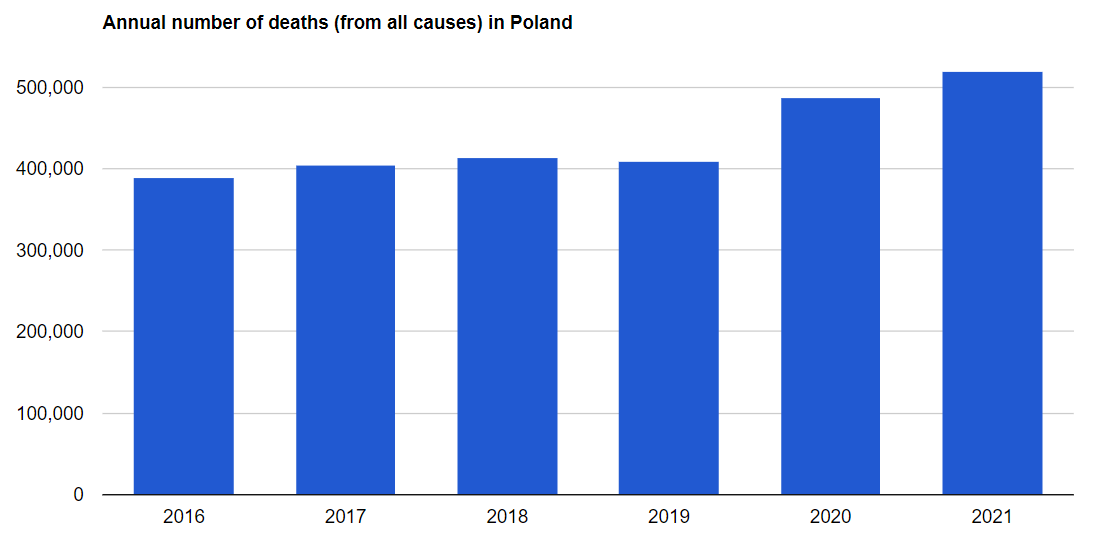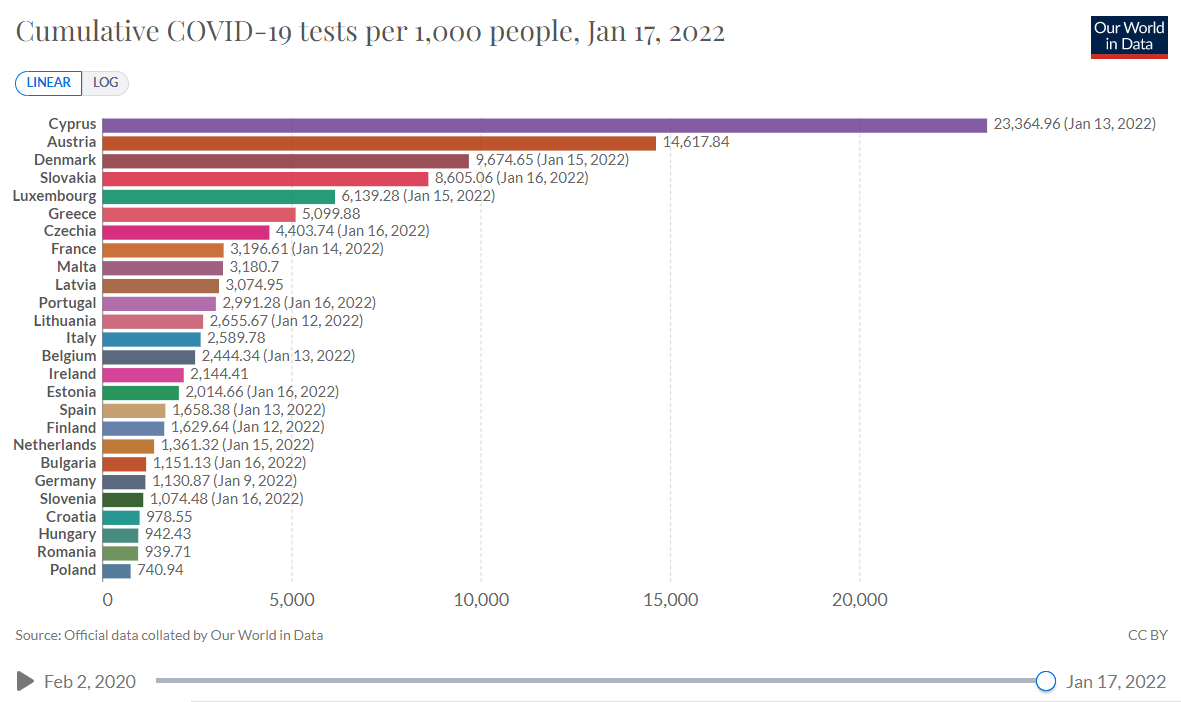Over half a million people died in Poland last year. That was more than in 2020 – when Poland had the European Union’s highest excess death rate – and the highest figure recorded since the Second World War.
There are fears that this year could see a similar scale of tragedy, with Poland currently having the EU’s second highest weekly average of Covid deaths and officials warning that low vaccination rates could see hospitals struggle to cope as the Omicron variant spreads.
Data from Poland’s civil registry show that there were 519,872 deaths in 2021. That was 7% more than the 486,430 recorded in 2020, and 29% more than the annual average of 403,767 deaths between 2016 and 2019, the four years before the pandemic.

That latter figure represents Poland’s excess death rate, i.e. how many more people died than would normally have been expected to. It was significantly higher than in 2020, when the excess death rate was 20% (which was itself the largest of any other EU member state that year).
While Poland suffered around 116,000 more deaths in 2021 than the pre-pandemic average, there were “only” 68,500 Covid-related deaths recorded in official statistics.
Of the remaining 47,500 excess deaths, some will have been unrecorded Covid-related deaths, especially as Poland has the EU’s lowest Covid testing rate since the start of the pandemic.

Number of Covid tests carried out in each EU country since the start of the pandemic per 1,000 people (source: Our World In Data, under CC BY 4.0)
Others will have been indirectly caused by the pandemic, as the healthcare service was forced to delay some treatments due to Covid pressures and some patients were less likely to seek treatment or delayed doing so.
Yet although excess deaths increased in Poland in 2021 compared to 2020, a number of other EU member states fared even worse, according to data compiled by The Economist.
As of 17 January, the EU countries with the highest rate of excess deaths in relation to population since the start of the pandemic, according to the newspaper’s index, are Bulgaria (884 excess deaths per 100,000 people), Lithuania (634), Romania (590), Slovakia (450), and then Poland (441).
At the other end of the scale, with the fewest excess deaths, are Denmark (53), Luxembourg (53), Cyprus (59), and Ireland (65). Among the largest EU member states, the figures are 142 for Germany, 137 for France, 289 for Italy and 241 for Spain.
The Economist has open sourced its #rstats code for cleaning, analyzing & visualizing excess deaths data by country #ddj
Tracker: https://t.co/oUbZexKqmk Code: https://t.co/v67eK74Hda pic.twitter.com/zfqgCbPBlm— Brendan Tierney (@brendantierney) January 10, 2022
There are fears that Poland’s high death rates may continue this year. Currently, the country has the EU’s second highest rolling average of Covid-related deaths over the last week, behind only Bulgaria. In the seven days to 17 January, Poland reported an average of 364 deaths a day.
Poland also has the EU’s fifth lowest proportion of fully vaccinated people (57%). Since Covid infections began to rise again in October at the start of the country’s fourth wave, over 70% of deaths have been of unvaccinated people.
With the Omicron variant now beginning to spread, and the health minister declaring the start of the fifth wave, there are fears that the resultant spike in hospitalisations could once again see the Polish healthcare system struggling to cope.
Last week, three quarters of the government’s medical council, which advises on Covid policy, resigned in protest against the “limited efforts [made]…towards the threat of the Omicron variant, despite the enormous number of deaths expected”.
Main image credit: Jakub Orzechowski / Agencja Gazeta

Daniel Tilles is editor-in-chief of Notes from Poland. He has written on Polish affairs for a wide range of publications, including Foreign Policy, POLITICO Europe, EUobserver and Dziennik Gazeta Prawna.



















